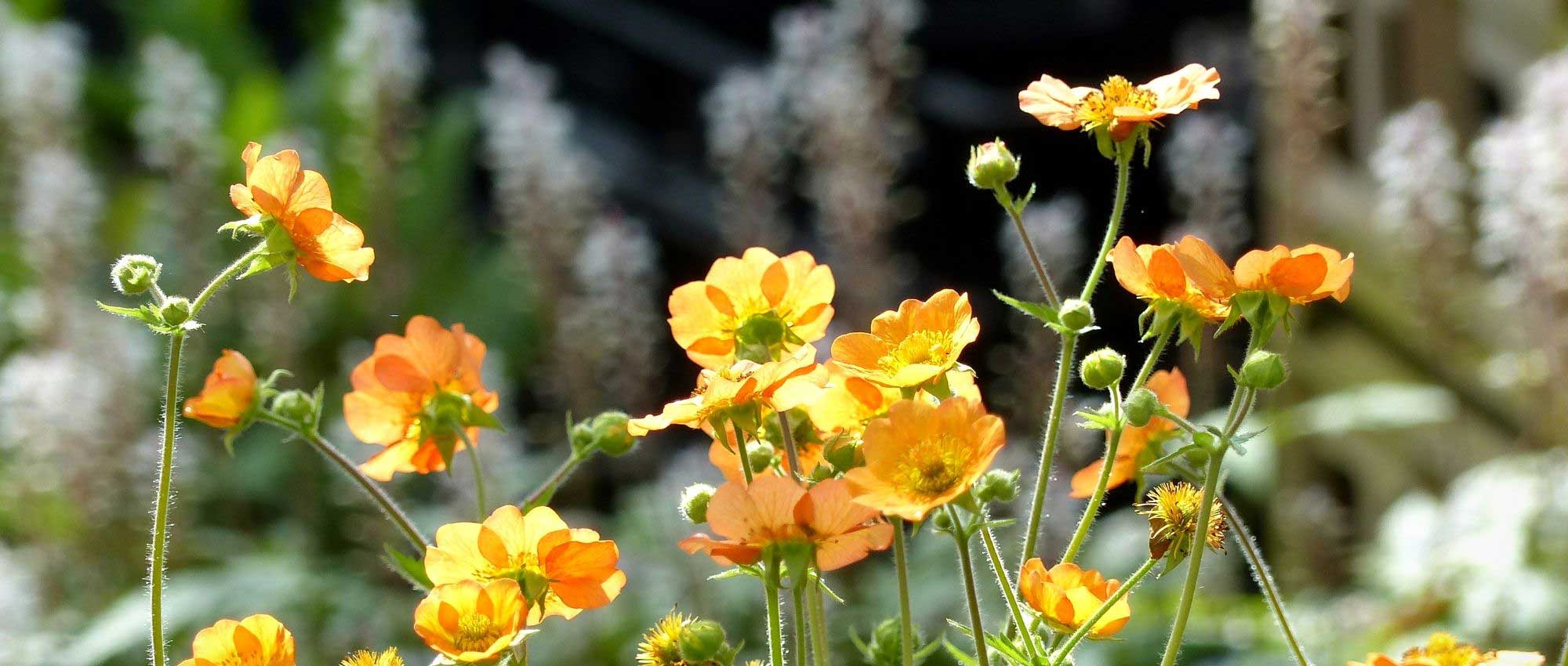
10 perennial plants with early summer flowering
Discover the 10 most beautiful varieties!
Contents
Daylilies, Astilbes, Meadowsweet, Geums or Hardy geraniums: these perennials are perfect for brightening up the garden from the beginning of summer, around June and July! Some of the plants we present in this sheet may bloom a little earlier or later, depending on the climate and region where you live (for example, in Mediterranean regions, flowering will be earlier, while in mountainous areas or in the North of France, it will be slightly later). Feel free to combine these perennials with each other to create a very colourful border from the start of summer! You can also pair them with late spring flowering perennials, early summer flowering bushes, or even late summer perennials, to ensure blooms over a long period!
And for more options, don’t hesitate to check out our entire range of summer flowering perennials.
Daylilies
Daylilies, also known as Hemerocallis, are cherished for their large flowers in warm tones! They are often yellow, orange, or red, but can also bloom in white, pink, or purple, depending on the varieties. They typically have six large petals and long stamens at the centre, although some are distinguished by their double flowers. The flowers last only a day, but they continuously renew themselves! Daylilies are very easy to grow, live long, and require little maintenance. Reserve a well-sunny spot for them: they need at least six hours of sunlight per day. Additionally, their flowers have the advantage of being edible… perfect for enhancing salads in early summer!
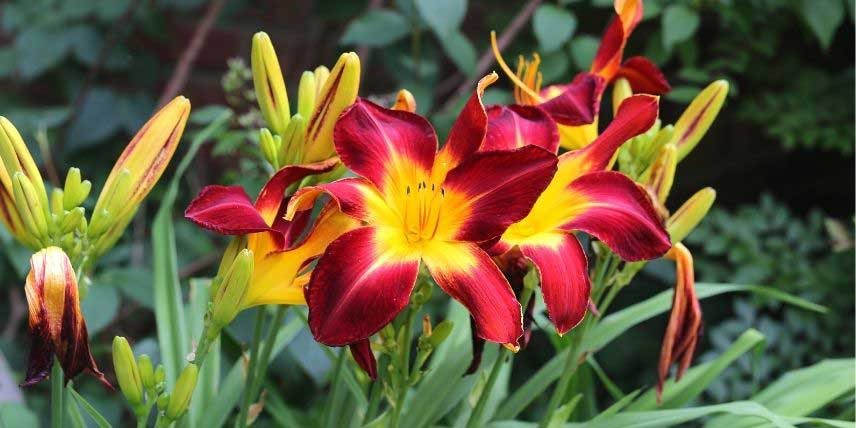
The vibrant flowering of Hemerocallis ‘Ruby Spider’ (photo Jim, the Photographer)
Astilbes
Astilbes are beautiful rhizomatous perennials with a light and airy flowering. They thrive in heavy, moist soil and can easily be planted on the banks of a pond. It is best to place them in partial shade, protected from direct sunlight. Their flowering takes the form of long upright panicles, which can be white, pink, mauve, or red depending on the variety. Their finely cut foliage is also appreciated. The height of astilbes varies quite a bit: the smallest do not exceed 20 cm, while the tallest can reach 1.70 m! With their light and airy flowering, astilbes easily find their place in naturalistic gardens! Moreover, they are quite hardy plants, tolerating temperatures down to -20 °C, and they are relatively easy to grow, provided the soil does not dry out in summer.
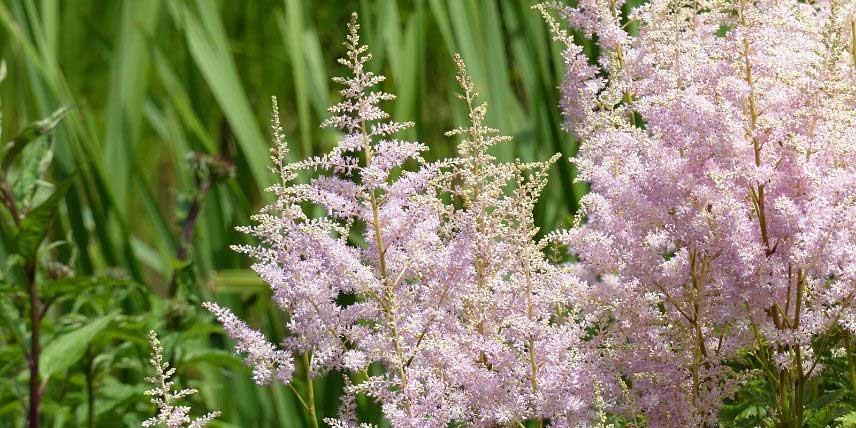
Astilbe arendsii ‘Gloria’ offers light and airy panicles
Discover other Summer flowering perennials
View all →Available in 0 sizes
Available in 0 sizes
Available in 0 sizes
Available in 0 sizes
Available in 0 sizes
Available in 0 sizes
Available in 0 sizes
Available in 0 sizes
Available in 1 sizes
Available in 0 sizes
Meadowsweet
Meadowsweet, or Filipendula, is a beautiful perennial that, like astilbe, thrives in partial shade in heavy, moist soil. It offers a light and airy flowering, often white, sometimes pink depending on the varieties. The tallest can reach up to 2 metres high. Meadow Sweet enjoys rich, humus-bearing soils that remain consistently cool to moist, even in summer! Don’t hesitate to plant it in groups of at least five young plants for a more striking effect. In the garden, you can pair it with Veronicastrums, Ligularias, astilbes, Gunnera, and rhubarb Rheum palmatum.
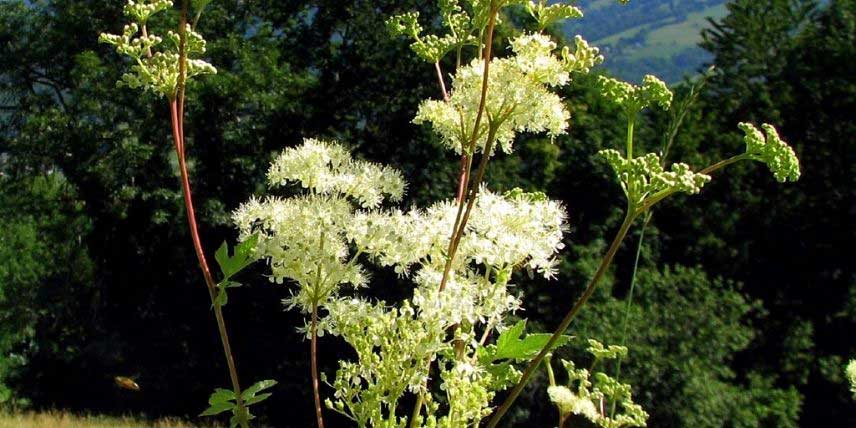
Meadow Sweet, Filipendula ulmaria, is valued for its very light white inflorescences
Avens
Avens, or Geum, are charming perennials that produce flowers often in yellow, orange, or red, borne at the tips of slender stems. Their flowering is airy and very light. They bloom from May until July-August, and some varieties have a perpetual flowering! Avens are not very tall: generally, they do not exceed 60 cm in height. We particularly recommend the varieties ‘Totally Tangerine’, with orange flowers, ‘Mai Tai’, with apricot flowers, or ‘Banana Daiquiri’, with yellow flowers. Avens are low-maintenance and easy to grow. They thrive in partial shade, in cool but well-draining, fairly fertile soil. Geum rivale, on the other hand, prefers moist soils and is perfectly suited for planting at the edge of a pond.
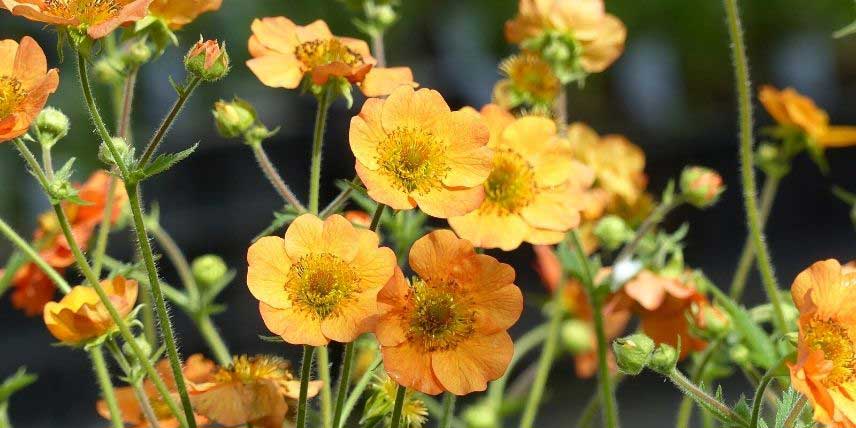
The lovely orange flowers of Avens ‘Totally Tangerine’
Astrantias
Astrantias produce splendid star-shaped umbel flowers that are very delicate, available in white or pink shades. These flowers measure about 3 cm in diameter. Depending on the varieties, they come in subtle hues ranging from dark pink – purplish, very light rosy white, to almost silver white! They are melliferous, attracting pollinating insects. The leaves of the astrantia have a lovely palmate shape. It is a rhizomatous plant that grows slowly and takes time to establish. Astrantia is a semi-shade plant that enjoys cool, fertile, well-drained soil. It also has the advantage of being quite hardy and not very susceptible to diseases!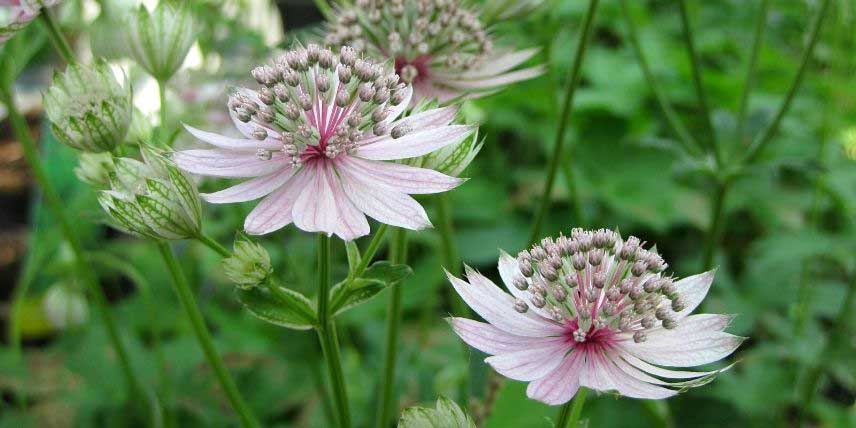 Astrantia major ‘Rosea’ produces extremely delicate flowers!
Astrantia major ‘Rosea’ produces extremely delicate flowers!
⇒ Astrantia: planting, caring for, and combining in the garden
Acanthus
Acanthus are impressive and highly graphic perennials: they produce large upright spikes in early summer, made up of two-lipped flowers in white, cream, or purple. They are not fragrant but are melliferous. Their beautifully cut foliage is also appreciated! Acanthus are sturdy, vigorous, and low-maintenance plants. Moreover, they grow quickly, with the tallest varieties reaching up to 1.5 m in height. Acanthus is a suckering plant that can form large clumps. It thrives in sunny locations and rich, deep, well-drained soil but will tolerate any type of soil, provided it does not retain moisture in winter. If happy, it can easily naturalise! Additionally, it is quite hardy, tolerating temperatures down to -15 °C.

The graphic and impressive flowering of Acanthus mollis (photo Teresa Grau Ros)
Hardy geraniums
Hardy geraniums – not to be confused with Pelargoniums – form a very large group of hardy perennial plants, whose flowers come in soft shades: blue, pink, mauve, white… They are easy to grow and maintain. For early summer flowering, we particularly recommend the meadow geranium, Geranium pratense. There are several varieties with double flowers. Some have purple foliage, like Geranium ‘Black’n White Army’! You can also choose Geranium renardii, which has beautiful, soft, downy leaves. It thrives in sunny locations and well-drained, poor soils, making it perfect for rockeries. Also discover Geranium magnificum. Its flowers are a very intense violet-mauve! Additionally, its leaves take on beautiful orange hues in autumn.
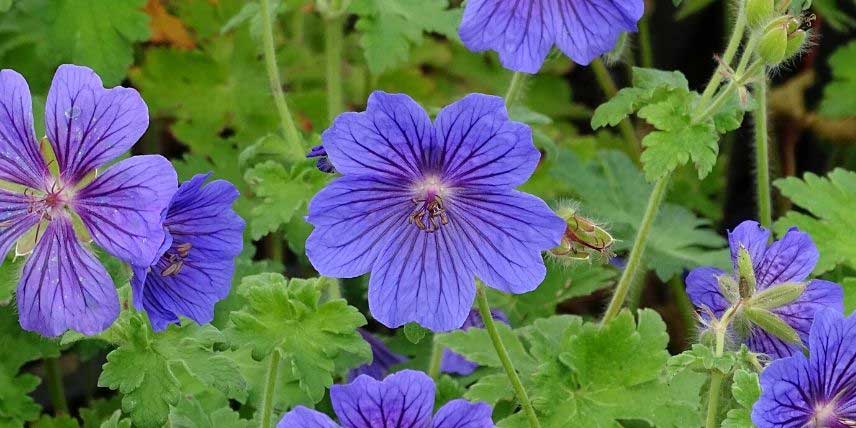
The delicate blue flowers, beautifully veined, of Geranium magnificum ‘Anemoniflorum’
Lupins
Lupins offer beautiful compact and upright clusters of numerous flowers at the end of spring to early summer, which can be blue, mauve, red, pink, yellow, white… They have very bright and vibrant colours! Additionally, some varieties are bicoloured. Lupins also feature stunning palmate leaves. The most common in gardens are the Russell hybrid lupins. We particularly recommend the varieties ‘La Chatelaine’, with pink flowers, ‘La Demoiselle’, with white flowers, or ‘Le Chandelier’, with yellow flowers. Lupins integrate easily into an English garden, and they have the advantage of adding colour and structure to flower beds. They thrive in full sun or partial shade, in rich, cool, and deep soil, and do not like calcareous soils.
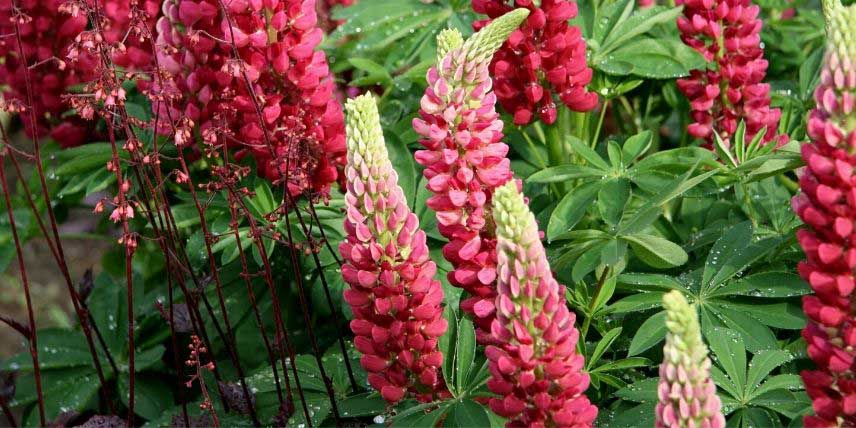
The ‘Gallery Red’ Lupin offers impressive red flower spikes that lighten towards the top, and has superbly cut foliage!
Thistles
To enjoy a beautiful flowering from the beginning of summer, you can also grow ornamental thistles. For example, discover Cirsium rivulare ‘Atropurpureum’, which offers feathery magenta-red heads from June. This plant thrives in heavy, moist soil and is perfect for the edge of a pond! You can also choose the teasel, Dipsacus fullonum, which produces very graphic, spiny inflorescences in June and July! Also, check out Echinops, which also provide a graphic flowering, in the form of spheres borne on upright stems. We particularly recommend Echinops sphaerocephalus ‘Arctic Glow’.
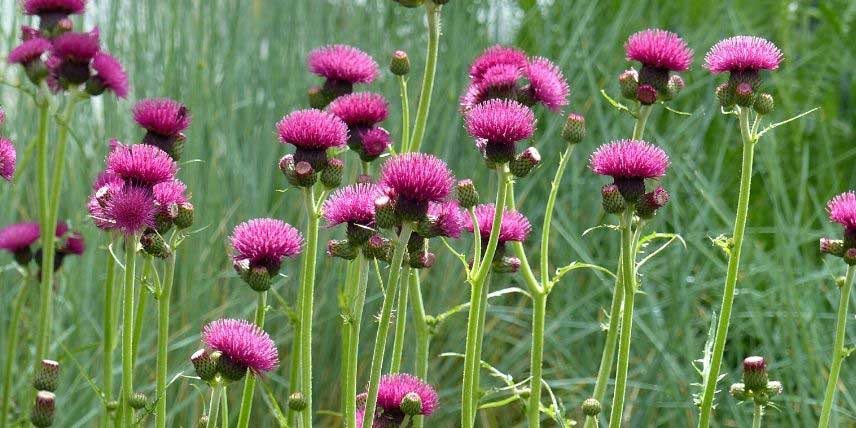
The magenta-red, slightly violet flowers of the River Thistle, Cirsium rivulare ‘Atropurpureum’
Amsonia
Amsonia is a beautiful perennial, still relatively unknown, that produces small star-shaped flowers in light blue during June and July. It develops from a more or less lignified stump and forms lovely clumps with relatively fine, elongated foliage that takes on beautiful autumn colours. We particularly recommend the variety ‘Blue Ice’, which offers stunning blue flowers. As for its cultivation, Amsonia thrives in partial shade, in soil that remains cool even in summer. It is also very hardy and does not require winter protection.
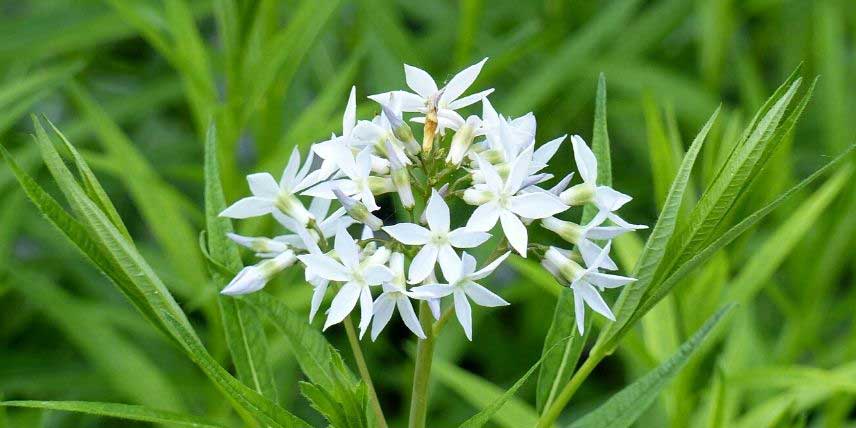
The pale blue, almost white star-shaped flowers of Amsonia ciliata
- Subscribe!
- Contents
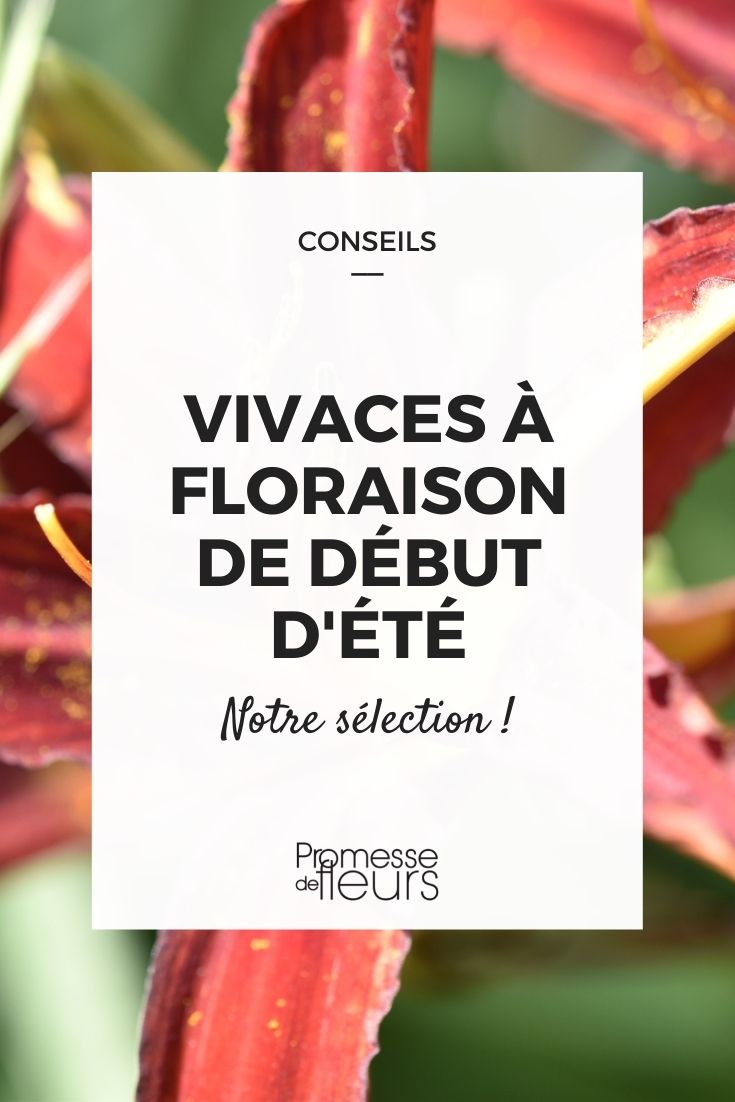































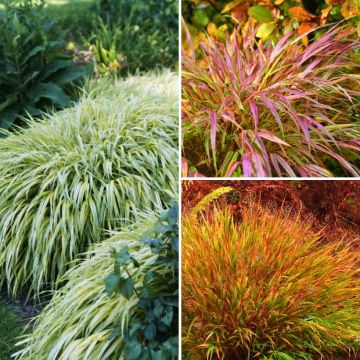
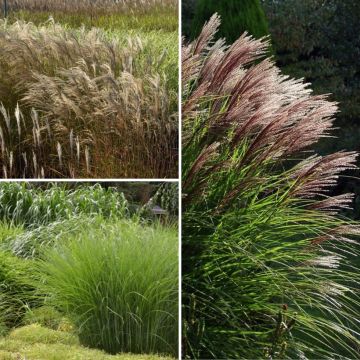
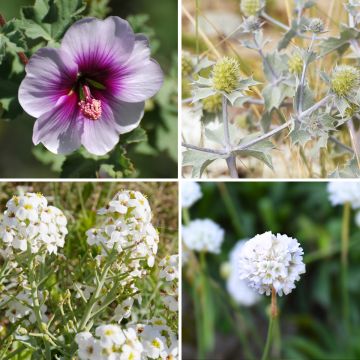
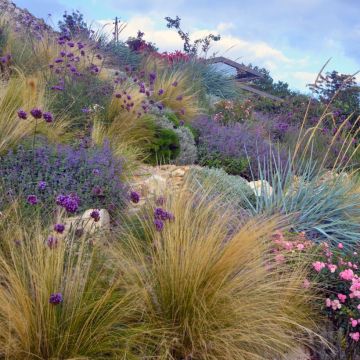
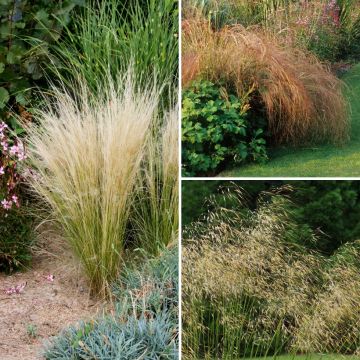
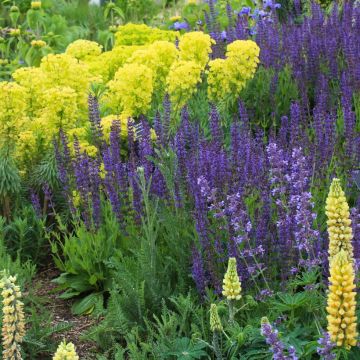
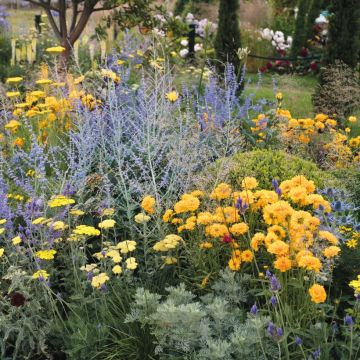
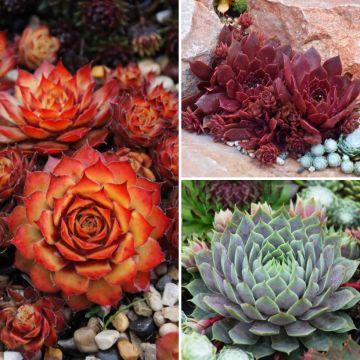
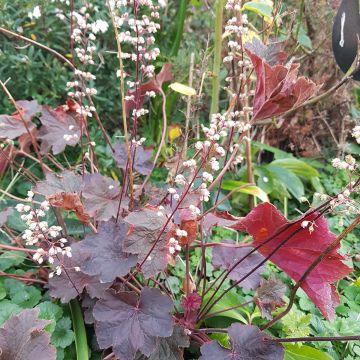
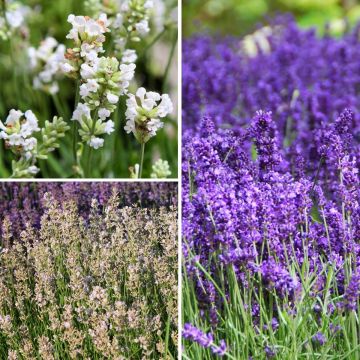
Comments